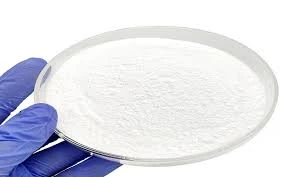Understanding Sulphamic Acid Properties, Applications, and Safety
Sulphamic acid, also known as sulfamic acid, is an inorganic compound with the formula H₃NSO₃. This white crystalline solid is widely recognized in various industrial and laboratory applications due to its unique properties and versatility. In this article, we delve into the characteristics, uses, and safety measures associated with sulphamic acid.
Characteristics of Sulphamic Acid
Sulphamic acid is a sulfonic acid, which means it contains the sulfonic group (-SO₃H). It has a molecular weight of 97.09 g/mol and is soluble in water, making it an excellent choice for various aqueous applications. This compound has been noted for its low toxicity and is less corrosive compared to stronger acids, which makes it safer to handle for many users. The melting point of sulphamic acid is around 205°C, and it can decompose into sulfur dioxide and ammonia when heated excessively, thus necessitating careful storage and handling.
Applications of Sulphamic Acid
1. Industrial Cleaning One of the most notable applications of sulphamic acid is in the cleaning industry. It is commonly used as a descaling agent to remove limescale and mineral deposits in industrial equipment like boilers, heat exchangers, and cooling towers. The effectiveness of sulphamic acid in breaking down these deposits is due to its ability to dissolve calcium and magnesium salts, making it a preferred choice for maintaining the efficiency of thermal systems.
2. pH Regulation Sulphamic acid is frequently employed as a pH regulator in swimming pools, cooling towers, and other systems where maintaining water quality is crucial. Its ability to lower the pH levels without the aggressive nature of stronger acids makes it a valuable asset in water treatment facilities.
3. Manufacturing Processes In the realm of manufacturing, sulphamic acid is used in the production of fertilizers, dyes, and pigments, as well as in the preparation of other important chemicals. Its stability and ease of handling make it an ideal choice for various synthesis processes.
sulphamic

4. Textile Industry Sulphamic acid finds its application in the textile industry as well, especially in dye fixation processes. The compound assists in ensuring that dyes adhere properly to fabrics, contributing to the durability and quality of textile products.
5. Laboratory Reagent In laboratories, sulphamic acid is utilized as a reagent for various chemical reactions. Its ability to participate in numerous organic reactions makes it a sought-after compound in many analytical procedures.
Safety Considerations
While sulphamic acid is relatively safe when compared to other acidic compounds, certain safety measures must be adhered to when handling it. It is essential to wear appropriate personal protective equipment (PPE), such as gloves and goggles, to prevent skin and eye contact. In case of exposure, it is advisable to rinse the affected area with water thoroughly. Moreover, sulphamic acid should be stored in a cool, dry place, away from incompatible materials such as strong oxidizers.
Inhalation of sulphamic acid dust or vapors should be avoided, as it can cause respiratory irritation. Ensuring proper ventilation in workspaces where sulphamic acid is used can mitigate these risks effectively. In the event of any accidental spills, it is crucial to follow standard operating procedures for clean-up and waste disposal to minimize environmental impact.
Conclusion
Sulphamic acid is a remarkable compound with diverse applications across various industries. From cleaning agents to laboratory reagents and industrial processes, its versatility is widely recognized. However, despite its relative safety, users must remain aware of the necessary precautions to handle it properly. As industries continue to seek effective solutions for cleaning, regulation, and manufacturing, sulphamic acid is likely to maintain its relevance and importance for years to come. With the right knowledge and precautions, this compound can be used safely and effectively to meet the needs of modern applications.

